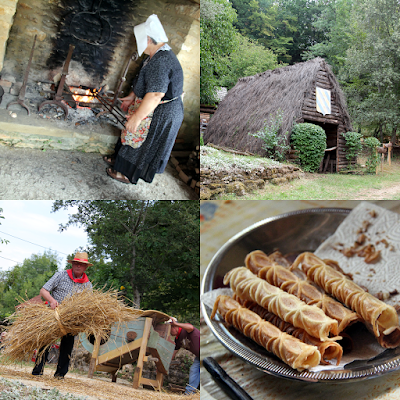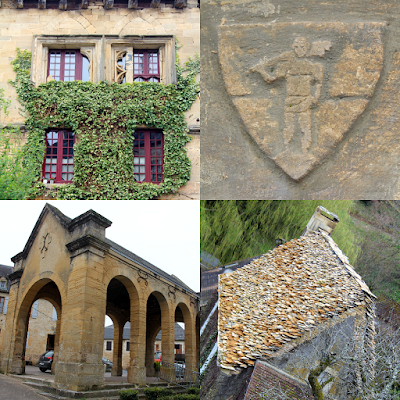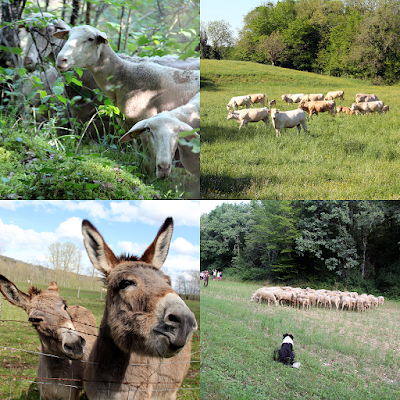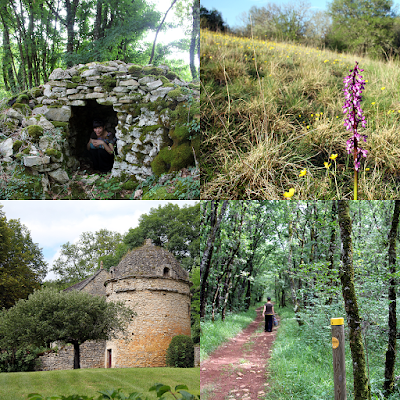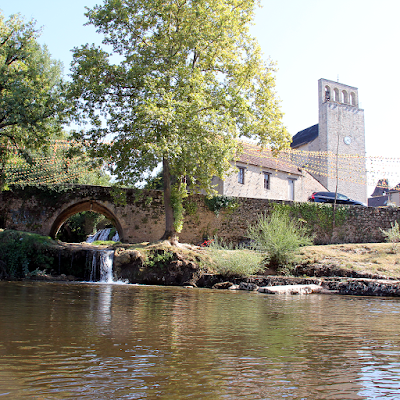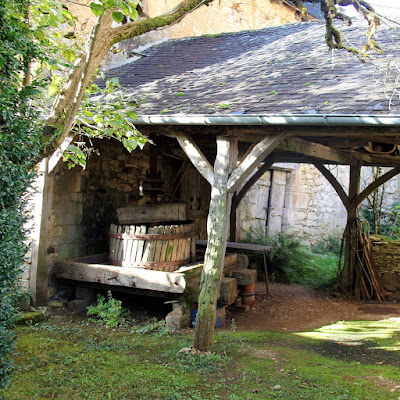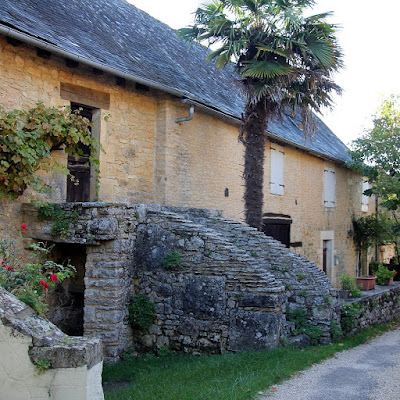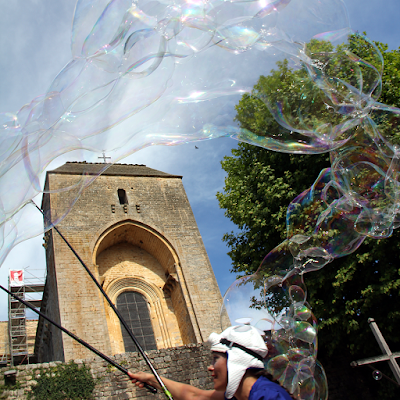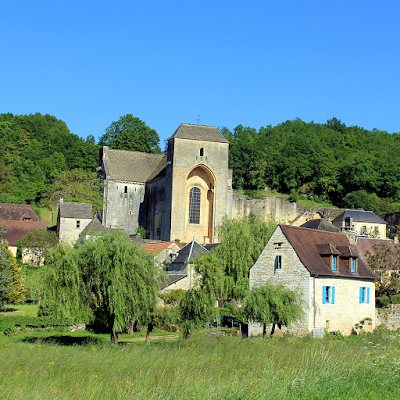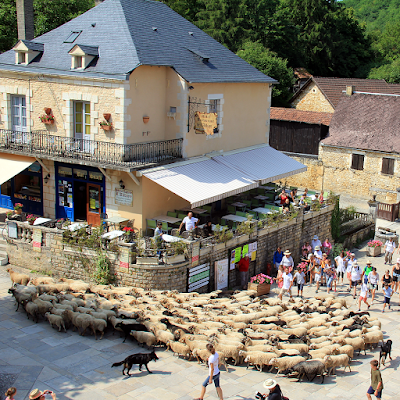 |
| Ensemble of beautifully restored local stone buildings and lauze roofs. |
Typical village located in the heart of the Périgord Noir, Saint
Genies is located on the Chironde, a tributary of the Coly. Of the
XIIth century castle only a vestiges of the dungeon (2)
remain. The village is renowned for the important architectural ensemble of
beautifully restored local stone buildings and lauze roofs. On the
central square a market is held every Sunday morning, in July and
August, the Wednesday night market allows you to buy and consume on
the spot. From December to February the Sunday morning truffle market
brings together local producers.
 |
| In July and August, the night market allows you to buy and consume on the spot. |
In 1200 the village
is acquired by Boson de Salignac and mention of the lordship of Saint
Genies appears towards 1282. In 1327 the co-lords of Val,
Salignac and Saint Genies authorizes Gaubert de la Caminade to build
the Cheylard chapel. The date the original castle was destroyed is
unknown, the current castle (1) dates from the XVIth
century, when several houses (elements of the XIIIth
century) were united.
 |
| The XIVth century frescoes are of particular interest. |
From the Romanesque
XIIth century church of Notre Dame de l’Assomption (1)
only the apse remains. The side chapels date from the XIII, XV, and
XVIth centuries, the bell tower near the end of the XVth
century . The church was devastated during the wars of religion. The
chapel of Cheylard (or Saint Catherine chapel) (3) has survived in
its original form, its XIVth century frescoes are of
particular interest. It was recognized
as a historical monuments in 1899. The
middle section of the north wall depicts Saint Thomas Becket
(Archbishop of Canterbury between 1162 and 1170), a popular
saint in the Périgord and Limousin during the Angevine (‘English’)
empire.
 |
| A 'dynasty' of lauzier masters, classified as an UNESCO Intangible Cultural Heritage. |
Saint Genies has an exceptional heritage of lauze roofs, thanks to a
'dynasty' of lauzier masters. Classified as
an UNESCO Intangible Cultural Heritage (ICP) Mr.Chapoulie is also
responsible for the upkeep of beautiful
Perigord Noir castles like Castelnaud, Fenelon, Marqueyssac and even
roofed the Maison de la Sirène in Collonges-la-Rouge, Corrèze.
The lauzes are between 2 and 6 cm thick and
weight between 500 and 800 kg per m2, so
a solid oak frame with chestnut slats is needed. When restored, a roof is first '
rissonnee' (hedgehogged) to
check and clean the existing stone.Then redone from bottom to top on a 'bench'.
 |
| Map of Saint Geniès. |
Saint Geniès is at the start of a number of
hikes, the 50 minutes Promenade the bourg offers some great
views, whiles the 11/15 km Boucle du Sireyjol et de la Chironde explores the Watermills and small cultural
heritage like the lavoir (4), former railway station (5) and
pigeon-towers (especially recommended during the European Mill days
and National Heritage Weekend when mills are open for visits). Other
options are the 15.5km Boucle Pierres et Lauzes, the 7,7km Boucle des
Moulins, 7,7km Boucle des Etangs and the 15,4km Boucle des Combes.
Find out more about the landscape, history, vegetation, the villages and life on the causse:The index of this blog.

